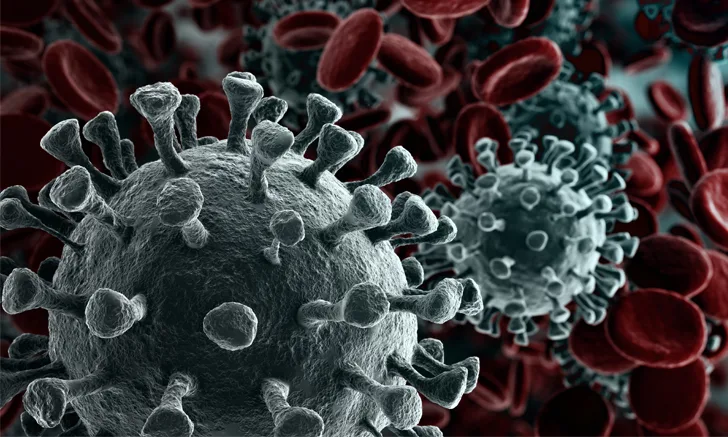SARS-CoV-2
J. Scott Weese, DVM, DVSc, DACVIM, FCAHS, University of Guelph, Ontario, Canada

Severe acute respiratory syndrome coronavirus 2 (SARS-CoV-2) is a Betacoronavirus that is further classified into the subgenus Sarbecovirus and is distinct from canine and feline coronaviruses. Although canine respiratory coronavirus is also a Betacoronavirus, it is in the subgenus Embecovirus. Canine enteric coronavirus and FIP coronaviruses are Alphacoronaviruses.
Host Range
The origin of SARS-CoV-2 has not been definitively identified but is suspected to be a Chinese horseshoe bat.1 In late 2019, SARS-CoV-2 infection to and between humans led to a worldwide pandemic with rampant transmission. Widespread human infection led to increased exposure in domestic and exotic animals and experimental infection studies that resulted in the identification of numerous susceptible animal species. Cats, dogs, ferrets, mink, deer, Asian small-clawed otters, certain species of mice, various large cats, skunks, and many nonhuman primates are susceptible to natural infection.2-10 Additional species, including a range of rodent species11,12 and New Zealand white rabbits,13 have been experimentally infected. Cattle and pigs demonstrate poor experimental susceptibility to infection, suggesting that natural infection is likely of limited concern.14,15 It should, however, be noted that viral mutation can potentially result in expansion in the host range. Care should be taken when stating a species is not susceptible.
Disease in Companion Animals
Cats
Cats are both naturally and experimentally susceptible to SARS-CoV-2,2,5,6,16,17 and transmission between cats has been identified experimentally.18,19 Preliminary reports have identified high seroprevalence rates in cats (≥40%) with owners diagnosed with coronavirus disease (COVID-19).4,6 Infection in cats most often appears subclinical; however, clinical disease has been reported.20 Mild upper respiratory tract infection is likely the most common clinical presentation, but serious infection, including fatal disease, has been identified.20 Although there are concerns about secondary myocarditis and cardiomyopathy,21 as occurs in humans, the risk in cats is currently unclear. Mild GI signs (eg, vomiting, diarrhea) may also occur.
Dogs
Dogs may be relatively highly susceptible to infection but appear to rarely develop SARS-CoV-2 disease. Studies of dogs with owners diagnosed with COVID-19 have identified rates (≥15%) of seroconversion that tend to be lower than the rates identified in cats but are still suggestive of relatively common human-to-dog transmission.4,6 It is debatable whether clinical disease occurs either naturally or in experimental studies as a result of SARS-CoV-2 infection.22 SARS-CoV-2 in dogs may be a mild, self-limiting upper respiratory tract infection, or patients may be presented with nonspecific signs (eg, lethargy).
Ferrets
It has been predicted that ferrets and mink (another mustelid species) may be highly susceptible to SARS-CoV-2 based on prior susceptibility to the original SARS virus (ie, SARS-CoV-1) and other human respiratory viruses.9,10 In an experimental environment, ferrets and mink were highly susceptible to SARS-CoV-2,23,24 and signs of upper (and sometimes lower) respiratory tract disease have been identified in both natural and experimental studies. Limited reports likely reflect limited testing and reporting. Transmission between ferrets has been documented experimentally25 and in field conditions in mink.3
Zoonotic Risks
Although SARS-CoV-2 originated in animals, the COVID-19 pandemic is almost exclusively the result of transmission among humans. Widespread human-to-human transmission makes studying the potential and presumably minor role of zoonotic transmission difficult. Zoonotic transmission from mink to humans has been identified.26-28 Cat-to-cat transmission has been documented in experimental studies18,19 and may play a role in cat outbreaks in zoos, which raises concern for potential cat-to-human transmission. Dog-to-dog transmission has not been identified experimentally,19 and zoonotic risks from infected dogs are probably minimal to negligible.
Although there were early concerns that cats and dogs could act as mechanical vectors (fomites) through haircoat contamination, it is now understood that surfaces (of any type) pose limited risk for transmission. Viable virus has not been found on haircoats of pets that had contact with humans with COVID-19,29 and the potential risk from contact with a haircoat is likely negligible.
Vaccination of Animals
Two vaccines are currently available for animals: a recombinant spike protein vaccine used in North America in mink and certain exotic animal species (predominantly felids and nonhuman primates) and an inactivated vaccine developed in Russia and labeled for use in various species, including dogs and cats; no published studies exist for this latter vaccine. No licenced vaccines for dogs or cats are available outside of Russia.
There is currently little to no indication that domestic dogs and cats should be vaccinated, given the mild nature of the disease, limited zoonotic risk from animals (especially when extensive human-to-human transmission is ongoing), and limited information about efficacy or safety. Cost and/or benefit decisions more clearly support vaccinating nonhuman primates and certain large cats because of their susceptibility and potential for severe disease, as well as for conservation.
It may be more relevant to vaccinate pets if more serious disease is encountered or if evidence of reasonable risk for zoonotic transmission and reduction in viral shedding in vaccinated animals emerges. This is most likely related to emergence of a new variant with greater ability to cause severe disease.